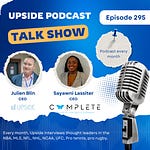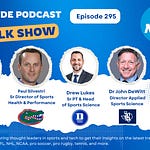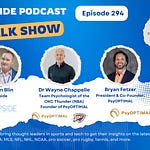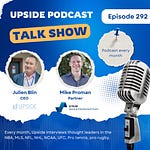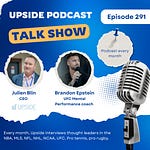Today we have the honor of interviewing Megan Rottler Hattori, the Associate Director of Sports Performance for Olympic Sports at Duke University (NCAA). She is also the primary sports performance coach for the women’s soccer and volleyball teams.
Before her tenure at Duke, Rottler Hattori was the Associate Director of Strength and Conditioning at Harvard University. There, she was responsible for the strength and conditioning programs of various sports, including men’s and women’s diving, women’s lacrosse, women’s rugby, softball, women’s volleyball and men’s rowing, and also assisted with the football and women’s basketball programs.
Her career in sports performance began at Southeast Missouri State University, where she initially worked as a graduate assistant before transitioning to a full-time role.
📝Show Notes: Through this interview, we touched on her background, and her role at Duke University. She also discussed how she tailors her performance programs to the specific physical and tactical demands of both soccer and volleyball. She also touched on the key strategies she uses to monitor and manage athlete recovery during the in-season grind, especially when dealing with the academic pressures of student-athletes. She also discussed what her framework is for evaluating and integrating new technologies into her performance program. Lastly she touched on what she finds to be the most challenging part of adopting new technologies in a high-performance collegiate setting—and she overcame resistance or limitations.
You can read the full transcript of the podcast interview with Megan located at the top of this blog post.
Here are the best quotes from the interview with Megan:
1. Journey into Sports Performance & Influences
“Yeah, so I was a student athlete my whole life. I played softball in high school and even into college. I found out about sports performance when I met my collegiate strength coach and thought, ‘This is a cool profession,’ so I went the exercise science route. My senior year, I transferred to Southeast Missouri State to be closer to home and decided not to play softball anymore, which gave me more time to partake in an internship with the strength and conditioning program there. I fell in love with it—this is what I want to do. I was lucky enough to do shadowing and an internship, and they liked me enough to keep me around for a GA position and then an assistant job after that.”
“At Southeast Missouri State, I worked under Ryan Johnson, who is an amazing mentor. I definitely wouldn’t be the coach I am today without him. He was the director of the strength and conditioning program—very knowledgeable, always learning, super organized. I’d like to think I took on some of those features from him. Shoutout to Coach Ryan Johnson for giving me my start.”
2. Tailoring Programs for Soccer vs. Volleyball
“Volleyball players are typically tall and lanky—we’ve got some shorter DSs and liberos too—but generally, they have a higher training age. I like to Olympic lift them to develop coordination, bar receiving, and vertical power since volleyball is a very vertical sport. Their court is small, so we don’t get too complex with conditioning. We still do speed work, but it’s more targeted.”
“Soccer players, on the other hand, often come in without much experience in the weight room. Their training is very soccer-specific before they get to college, which is great—but that means we have to focus more on foundational work. We do loaded jumps instead of Olympic lifts and stick mostly to kettlebell and dumbbell work. We’ll use barbells occasionally, but not in a complex way. Their complexity comes from the field—conditioning, speed work, agility—so I keep things simple in the weight room to keep them healthy and performing on the field.”
“At the end of the day, I meet each athlete where they’re at. Training age matters. I’ve had soccer players who are highly trained and volleyball players who aren’t. You have to be flexible and responsive to both the sport and the individual.”
3. Monitoring & Managing Recovery During In-Season Grind
“We’re lucky here to have a sports science department that we work closely with. Both my teams use Catapult for external load, and we also use daily wellness surveys to track how athletes are feeling—soreness, mood, sleep, etc. We get that information before training. If anyone is flagged, it’s an opportunity for a conversation. I’ll go talk to the athlete—‘What’s going on today?’—and that goes a long way.”
“One athlete might always run red on the wellness survey—always tired, always sore—and that becomes their normal. If anything deviates, I know it’s worth checking in. Another athlete might always say they’re fine no matter what, and you have to know them well enough to catch when that’s not true. Relationships are key. Technology is great, but you have to be able to interpret the data through the lens of real human connection.”
“You can have all the GPS and wearable data in the world, but if you don’t know your athletes—if you can’t spot when something’s off just by talking to them—then the data won’t help you much. Coaching still has to have that human element.”
4. Framework for Evaluating and Integrating New Technology
“There’s always something new coming out—it’s exciting, but I start by asking: ‘Do we need this?’ Different sports and athletes have different needs. If there’s a real need, then I start looking at what the best product out there is. And a big one for me is: ‘Do I know someone who’s already using it?’ If so, I’ll reach out to them and ask what their experience has been like before I even consider a trial.”
“I really appreciate what you guys are doing with Upside—it helps cut through some of the noise. Because honestly, a lot of times people just try to sell you something. You’ve got to look past the marketing and ask whether this tech is going to solve a specific problem we have.”
“I’ve definitely seen both sides—where something makes a real difference, and where something just doesn’t fit into our workflow or isn’t necessary. If you can’t explain the ‘why’ to your team—why we’re using this, what it’s going to help with—then you probably don’t need it.”
5. Challenges of Adopting Technology in a Collegiate Setting
“Whenever you introduce something new, there’s going to be pushback from someone—either a coach or an athlete. That’s where education comes in. I do the research, get excited about the product, and then bring that to the coaches. I explain what it is, what the science says, how it helps. Then we educate the athletes—‘This will help your recovery,’ or ‘This will improve your performance’—and most of the time, they’ll buy in if you explain it well.”
“I’ve also learned to keep it simple. I remember the first time I used ForceDecks—I was looking at everything, all the metrics. It was too much. My brain was overwhelmed. Now, I have three or four KPIs that I watch and that’s it. I don’t need to overcomplicate it. Same thing with the NordBoard and ForceFrame—we keep it simple and bucket the athletes based on their testing.”
“There’s a point where too much data becomes noise. It doesn’t help—it just slows you down. The technology should serve the program, not the other way around. So we’ve learned to streamline and only focus on what’s actionable.”
You may also like:
🔥Upside Chat with Female Sports Experts: Allison Schmitt (Olympic Champion),Mélanie Pauli (Swiss Football), Dr Christy Fernandez-Cull, PhD, CEO (DaVinci Wearables)
Today as part of our continued effort to bring more awareness on female athletes, teams and associated trends related to female athletes, we have the honor to interview a group of female sports performance experts:
🔥Upside NCAA Group Chat with Eric Renaghan (University of Miami/NCAA), Drew Lukes (Duke University/NCAA), Dr John DeWitt (Rice University), Brandon DeSantis (James Madison University/NCAA)
This week we had the honor to interview a group of NCAA sports performance experts.






